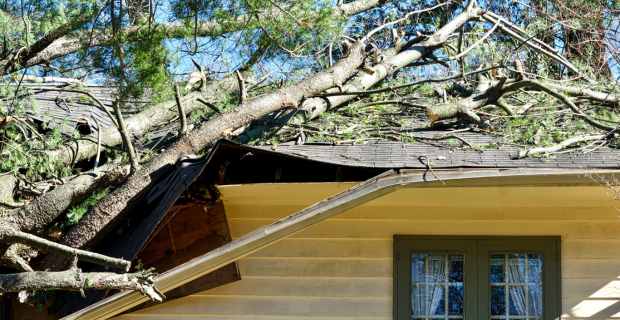Date Published: 2023/10/14
Read Time: mins
Your Guide for Dealing with Windstorms

Windstorms can cause a lot of damage to you and your property. Whether it’s the dangerous projectiles sailing through the air or the strong winds impacting driving conditions, it’s best to take preventive measures and be adequately prepared for the windstorm.
Preventative Measures before the Storm
With good home maintenance, you can control the amount of damage caused by the strong gusts of wind. Here are some important things to keep in good shape.
- The roof: Make sure shingles and other parts of the roof are fastened down. Watch for any unusual wear, and check the seals around skylights and chimneys.
- Windows and doors: It is a good idea to keep the doors closed. The same is true for windows. Try to limit drafts as well by sealing doors and windows.
- Outdoors: If you have a propane tank, make sure it is secure and the valve closed if there is a storm. Store garbage cans, patio furniture and other times that could be blown away. Avoid parking your car under a tree or power lines.
- Trees: Keep trees and shrubbery trimmed, and away from the surface of your house.
- Look for dead trees: Dead trees are the first to fall over in a windstorm. Make sure you prune dead branches and remove the tree itself if it is dead.
Storm Forecast
When the windstorm is in the weather forecast, you need to immediately start taking action to protect your family.
- Be sure to secure items that could blow away. Things like patio furniture should be secured. Bring them indoors if you can. Planters, toys, bicycles, or anything that could blow away should be secured or brought inside. If you cannot bring them indoors, tie them down to something sturdy.
- Prepare your emergency kit with three days’ worth of supplies. Make provisions for pets and take them with you if you have to evacuate. It is a good idea to keep an emergency kit prepared because windstorms can come up at any time. The emergency kit should also contain things like first aid material, flashlights, batteries, candles, matches, battery operated radio, and some cash.
During the Storm
When the storm gets going, you have to take shelter. If you happen to be driving, you need to get off the road. Don’t stay in your car unless you have no other option. Take shelter in a solid building.
If the storm is incredibly bad, it has the potential of becoming a tornado, so try to find whatever shelter you can. If you are outdoors and cannot get inside, try to get away from anything that could be blown away (i.e. a tree). In extreme cases, lay face down in a ditch.
After the Storm
Once the wind has died down and it is safe to go outside, be sure to do the following.
- Secure the outdoors: Pick up any branches or debris that has blown around, and that could be a hazard. Look for downed power lines. Also, never touch a downed power line.
- Secure the property: If windows are blown out, board them up. Take steps to prevent water damage if there is more rain.
- Inspect the roof: Roofs are often damaged by a windstorm, so inspect the roof to see if there is any damage. Contact a roofer for roof repairs if needed.
- If there is damage, take photos and contact your insurance broker to begin filing a claim.
If you have questions about your home or auto insurance coverage involving windstorms, contact us today at 877-976-7248 and we’ll help answer any of your questions.
Additional Resource:
- Information by the Institute for Catastrophic Loss Reduction